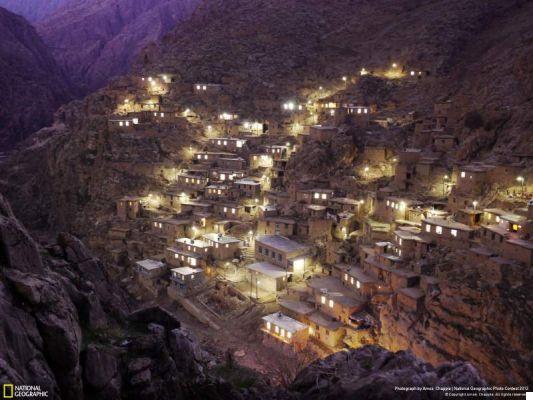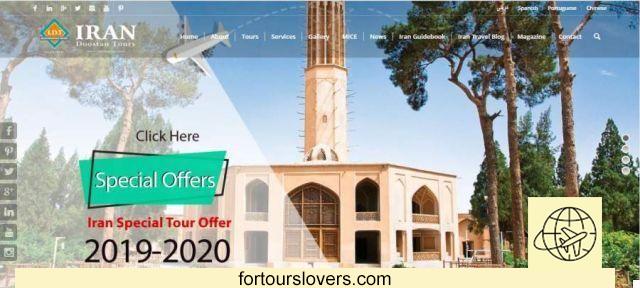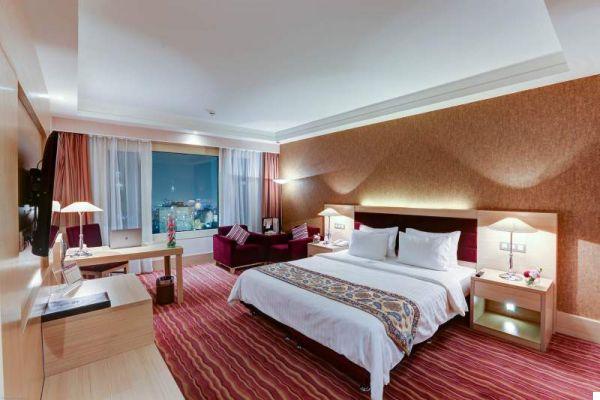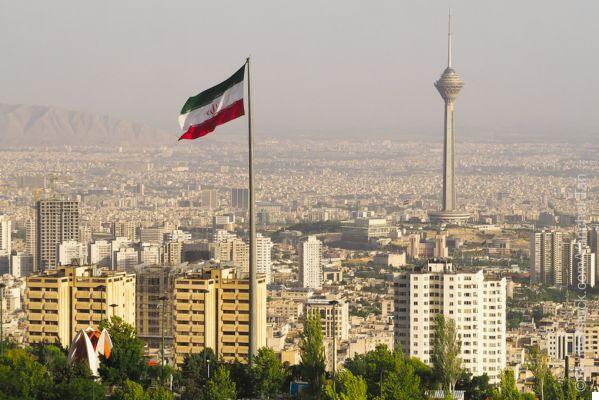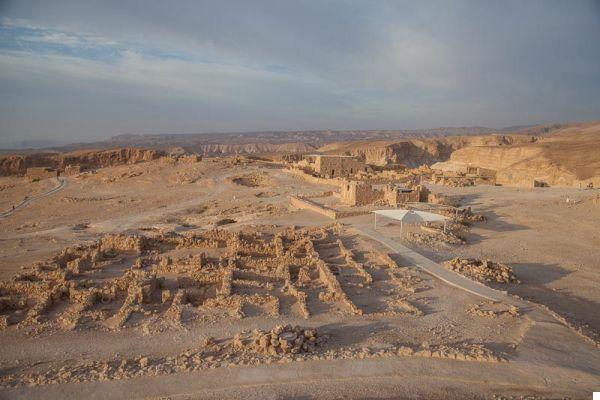Although at first glance Tehran may seem ugly, but if you look carefully there are small pearls to discover and that make Tehran deserve to be visited. there what to see in Tehran that you shouldn't miss!
The first time I visited the capital of Iran, at first glance I was a bit stunned: the traffic is the worst ever seen in my life, more than Cairo in Egypt or any other city never visited before.
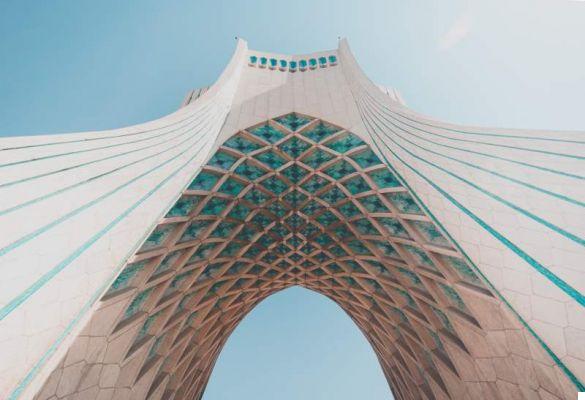
After the initial shock, however, I realized that, although she is not as beautiful as Shiraz or as Isfahan and despite the traffic being the worst I've ever experienced in my life, cheerful Tehran still has its own charm with its skyline set against the breathtaking backdrop of the Alborz mountains, the lively bazaars and its “contemporary” air.
I don't know how many days I spent here during my travels in Iran, maybe eight or ten, and every time I found there was something to discover, I think that's why Tehran is one of the places in Iran that I am at. more "affectionate".
If you stay organizing a trip to Iran surely you too will spend a few days in Tehran as most of the flights arrive at its international airport, theI have Khomeini airport.
Someone might tell you that the city is bad and to escape as fast as possible. In my opinion if you do, you are wrong: Tehran is a part of real Iran, one of its faces, as is Shiraz or theQeshm island or Iranian Kurdistan, or any other little corner of this amazing country.
Tehran is the place where modern Iranian history is born: from Moussadeq to the Shah, and then to the 1979 Revolution, perhaps Tehran is not the image of Iran you dreamed of visiting, but it is the place where it all began.
WHERE TO STAY IN TEHRAN
Due to sanctions, sites like Booking.com have very few hotels in Iran and you only find cheap hostels on Hostelworld.
I recommend you to use 1stQuest to book all hotels.
Again, the guys at 1stQuest have plenty of hotels in all major cities.
From luxury hotels to youth hostels, book a hotel in Iran it couldn't be easier.
Remember that you can get an exclusive 5% discount to book any hotel, as many as you want and when you want
with the code PMT-1stQuest at the time of purchase.
Click here, BOOK and SAVE
your 1stQuest
The 7 Best Things to See in Tehran
1 - Grand Bazaar
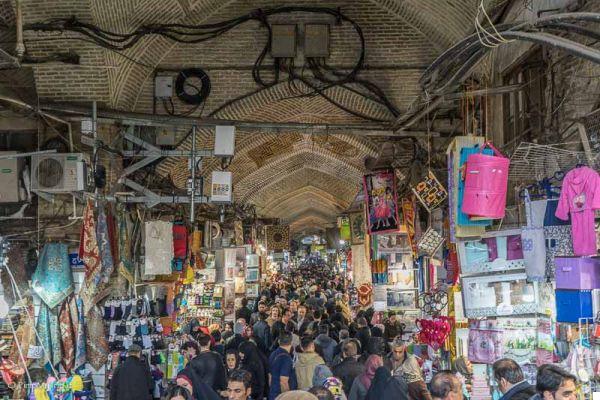
Il Grand Bazaar Tehran is not just a place full of people and small shops selling everything: it is the heart of commerce and the oldest market in the city.
The bazaar is a kind of labyrinth, more than 10 km of galleries and each of them is specialized in the sale of products.
Although the founding of the bazaar today dates back to the 19th century, some research says that some portions of it date back to before Tehran's rise under the Safavid dynasty in the 16th century.
There are banks, restaurants, tea houses, mosques and beautiful mausoleums hidden under the winding market corridors. The Bazaris are one of the strongest and most conservative groups in society and their support was instrumental during the Islamic revolution.
Bad news about the bazaar? This place puts your sense of direction in the spotlight!
The goods are arranged in sections; there is the dried fruit and spice section, the carpet section, the pottery, the enamel work, the jewelry section, as well as the areas dedicated to household items such as pots and pans and even eighties style blankets .
Good news? People are available and will be happy to show you the way.
Don't expect aggressive sales tactics like in Morocco or elsewhere Khan El Khalili in Egypt, sellers in Iran are much more discreet.
Incredibly photogenic, try to visit Tehran Grand Bazaar in the morning which is undoubtedly the best time.
2 – Golestan Palace
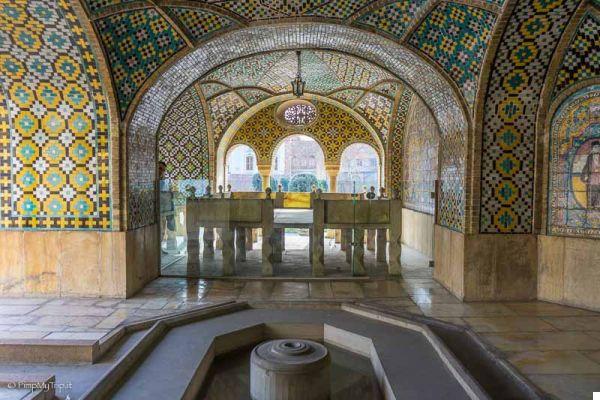
UNESCO World Heritage Site, the Golestan Palace it is no coincidence that it is included in all Tehran itineraries.
Located in the downtown area, right in front of the Grand Bazaar, Golestan Palace was built during the Safavid era even though it enjoyed its heyday under the Qajar dynasty.
Golestan Palace is one of the most spectacular places you will visit during your trip to Iran. This grand palace is a fine example of Persian art, history and architecture. It is the precious gem found in the heart of Tehran and which carries memories from the Safavid era to the Pahlavi kings.
It is the highlight of the capital and receives many Iranian and foreign visitors every day.
When you enter the Golestan Palace complex (yes, because the term palace is incorrect, in reality it is a complex of 17 buildings) the traffic and chaos of Tehran will be a distant memory.
Absolutely to mention the Takht-e Marmar Terrace (marble throne veranda) decorated with Iranian elements such as tiles, mirrors, stucco, lattice windows and paintings.
On the right corner of the same building, there is another terrace called Khalvat-e Karim Khani (Karim Khan Nook).
When it was built there was a marble fountain and Naser al-Din Shah lay there smoking his Qalayan enjoying the beautiful lush garden.
Unfortunately, the fountain no longer exists. It was removed and the marble tombstone of Naser al-Din Shah was brought in its place. The terrace with the fountain can be seen in a work of art made by the great and famous Iranian artist of the Qajar era, Kamalol Molk.
One of the best locations in the building where you can clearly see Iranian architecture blending with European elements is the Shamsol Emare (the Building of the sun).
You can visit the buildings individually or buy a combined ticket that allows you to visit them all.
Until recently it was not possible to photograph the interior of some buildings. Fortunately, recently it has been possible, so calmly take out your camera, especially for the incredible Diamond Room (but I won't tell you more).
Where it is: Tehran District 12 Fifth Khordad Avenue, Arg Sqr Panzdah-e-Khordad St.
3 - Museum of the Royal Crown Jewels
This museum is located in the vault in the Central Bank of the Islamic Republic of Iran on Ferdowsi Avenue, and as soon as you see the jewels in the collection you will immediately understand why they are kept inside a vault.
You know the Crown Jewels in London? They pale in comparison to this collection of immense wealth, once owned by the shah and then confiscated and put on display following the Islamic revolution.
The collection includes elaborate crowns, swords and shields decorated with precious gems, diamonds, emeralds, sapphires and a series of objects that are even a little strange, such as a globe with oceans made of emeralds on which of all countries it is easy to identify Iran, the only country made of diamonds.
The jewels of this were collected by monarchs from the 16th century during the Safavid dynasty.
In 1738, Shah Nader participated in a war campaign against some municipalities in northern India and returned to Iran with an innumerable amount of precious jewels.
Four of these jewels are nothing-little-little-less than diamonds Koh-i-Noor (which is now in London) and the Darya-ye-Noor, one of the rarest pink diamonds in the world (found here but both are originally from India and are still today the largest and most precious diamonds ever found), the trono Peacock a jeweled throne in solid gold and the Samarian Spinel.
Where it is: Tehran Province, Tehran, Javadiyeh, 213 Avenue Central Bank of Ferdowsi.
4 – National Museum
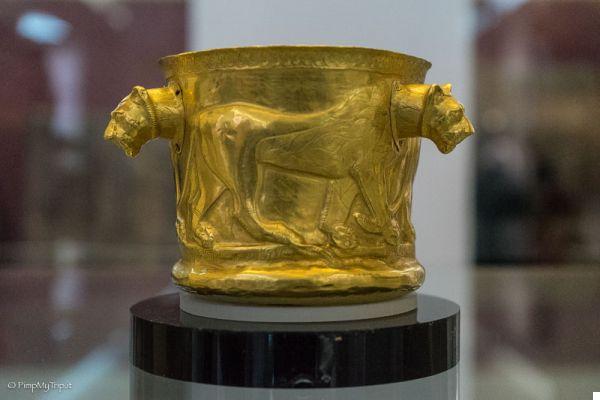
Il National Museum of Iran consists of two buildings: the Museum of Ancient Iran (in my opinion the most interesting), inaugurated in 1937, and the Museum of the (post) Islamic Era opened in 1972.
The Museum's collection boasts more than 300.000 objects of which only a few thousand are on public display.
Il Museum of Ancient Iran it is located in a brick building, designed by the French architect Andre Godard and consists of 3 large rooms in which artefacts from the Paleolithic to the Neolithic and the Bronze and Iron Ages are exhibited.
Il Museum of the Islamic Era is a collection arranged over 3 floors that contains various textile objects, ceramics, calligraphy and a number of other objects from the post-Islamic period of Iran.
5 - Museum of the Holy War (Holy Defense Museum)
Few go to visit this museum. I also discovered it a bit by chance, on the advice of an Iranian friend. a tip: do not miss it, in my opinion it is really very interesting (even if a little biased, let's face it, a little propaganda and self-celebratory).
Il Holy Defense Museum focuses on the bloody war between Iran and Iraq, in which more than a million people lost their lives.
The more than seven interactive rooms explain every aspect of the conflict in great detail - albeit mostly through displays, visual effects, environmental reconstructions and more.
This is a high-tech museum - if a little surreal - after which you might get a better idea of this heartbreaking episode in modern Iranian history.
Outside, a mosaic of home-made weaponry such as rockets, tanks and artillery pieces is on display. The complex has large garden areas, water features and play areas for children.
6 – Milad Tower
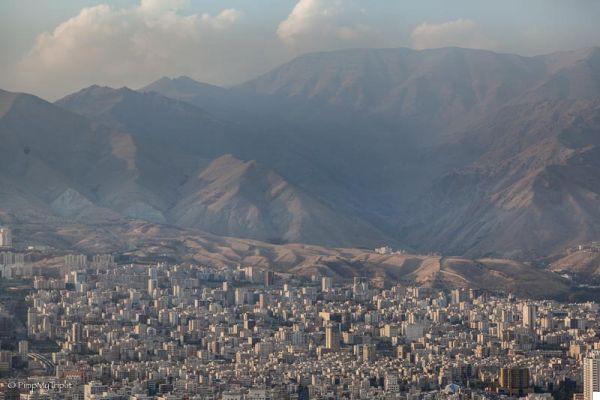
If you want to have the most impressive view of Tehran you have to climb the 435 meters of the Milad Tower, from which you will observe the skyline of the city with the Arbotz mountains as a backdrop.
The Milad Tower became the new symbol of Tehran soon after its construction. It is a multifunctional building, which stands proudly north of the city and is visible from almost every part of Tehran.
The Milad Tower is part of the Tehran International Trade and Convention Center. In addition to the convention center and the world trade center, the Milad Tower hosts various exhibitions and events.
In addition, you can visit the art gallery and the tower museum. When you're at the top, you can have lunch in a revolving restaurant, which offers breakfast (on weekends), lunch and dinner, and an incredible opportunity to see the city living beneath your feet.
7 – Niavaran complex
Il Niavaran Complex is another royal residence, located in the north of Tehran. Its origins are those of a royal summer residence and it was used as a resort by the royal families.
Like any other royal palace in Iran, the Niaravan Complex has stunning architecture and décor. Personally, during my visit, I could no longer take my eyes off the ceiling and walls.
As with Golestan, Niavaran is actually a complex with various buildings built on about 9000 square meters of gardens.
Currently the visit includes five museums (Niavaran Palace Museum, Ahmad Shahi Pavilion, Sahebqaraniyeh Palace, Jahan Nama museum and the private library), and other cultural, historical and natural attractions including the Blue Room, the Private Cinema, the Jahan Nama Gallery and Niavaran Garden.
Are you looking for an English guide in Tehran? WRITE ME AN EMAIL and I'll put you in touch with my correspondent who speaks English!
Other things to see and do
Sa'dabad Palace: Near the Darband Mountains in northern Tehran, Sa'dabad Palace was built during the Qajar dynast and years later ousted Golestan as a royal residence. This complex includes 20 buildings, each of them with a specific purpose, among which the most interesting and most visited are Palazzo Verde and Palazzo Bianco.
Masoudieh Palace: located in the downtown of Tehran, it attracts many visitors especially for the setting and its splendid architecture. Built within beautiful gardens, it was the “home” of many important events that changed the country, particularly during the revolution.
Ferdows Garden: Initially private gardens of the Qajari princes, Ferdows Gardens are a peaceful break from the chaos and traffic of Tehran. The princes probably did not imagine that one day the sycamores, pomegranates, cherries and sour cherries alongside the pines and pine forests that were brought as souvenirs from abroad, would today be open to visitors and ordinary people. Better for us that today we can visit them.
Azadi Tower: an icon of Iran known all over the world, the Azadi Tower - known as the Shah's Memorial Tower before the revolution - marks the west entrance to Tehran and is part of the Azadi Cultural Complex (you will probably see it on the way from the airport to the city center).
There is an underground museum which is included in the ticket and you can either walk up or take two elevators to get to the top of the 45 meter tall structure. And yes, the whole tower is clad in cut marble, so you can imagine how amazing it is at sunset when it turns completely pink (even the views from the top are truly amazing!).





